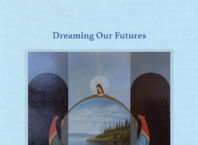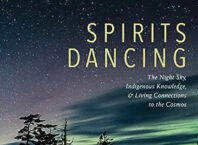The Dakota Way of LifeBy Ella DeloriaPublished by Mariah Press A companion to her novel Waterlily, the newly published work titled, The Dakota Way of Life by writer and ethnographer Ella Cara Deloria has recently been published by Mariah Press.
The book includes a letter recommending the manuscript for publication by the American Philosophical Society in Pennsylvian which written by the anthropologist Margarat Mead. It is included as a foreword and provides some necessary context for Ella Deloria’s work as a graduate student at Columbia University in the 1920s and 30s.
The printing of the new book is in large part due to the efforts of William Beane, Dakota historian, and Joyzelle Gingway Godfrey. Godgrey, Deloria’s granddaughter whose own work continues to provide fresh insight into Deloria’s life and work has added a brief preface. A word of thanks is also added to the opening pages of the new book by Dakota elder Sid Bird.
This study turns to examine Dakota life primarily within homes and camps, describing customs and traditions alive within Deloria’s own lifetime, and those stretching back several generations into the memories and experiences of her informants, elders with whom she worked.
Organized into three major sections, the study investigates social patterns, kinship systems, and the experiences of childhood. As an ethnographer, Deloria wastes no time in debunking myths held in common by fellow anthropologists by embedding her corrections within the body of the text. We hear an echo of Deloria’s encounter with the misinformation and half formed ideas of anthropologists of the era to which Deloria was responding.
Deloria begins with a correction, “First of all, the term camp circle is a mistranslation.” There are many such moments, clues to the dialogue Deloria began within her own discipline, work that would make later generations of more accurate scholarly research possible.
Readers interested in reflecting on their cultural history may smile to recognize much of themselves and their families in these pages. Deloria’s ability as a researcher able to capture a telling story or detail is set next to the informed analysis of the thoughtful writer.
In just one of many such instances, on the subject of birth and infancy, Deloria writes “A fretful child was quieted by the warning, ‘Sh! Don’t you hear a cici outside?’ The cici was never faced openly, never defined; and perhaps its very indefiniteness contributed to its value as a scare.”
Written in a clear voice, the study is accessible and should be appreciated by a wide audience.






